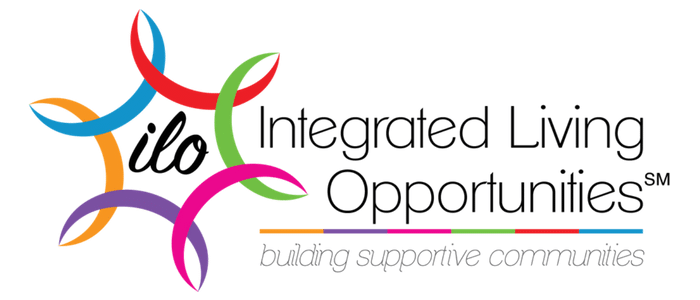The following is the story of Elaine, an ILO self-advocate,and the process that was undertaken to move her into her own home.
To learn more about Elaine’s work as a Grower at Red Wiggler Community Farm, click here.
1. Oct 2013, we were invited to attend a mandatory training at HOC because Elaine ‘s name had been selected from the waiting list for a housing voucher. Went to the training with all the required forms completed. Learned that we might qualify for a project-based voucher (not one you can take to any landlord – it is specific to a unit).
Three weeks later we learned that Elaine had been selected for a studio apartment in Takoma Park. Housing is great, but so are jobs and as Elaine has good jobs in upper Montgomery County and travels by public transportation, a unit in Takoma Park would not work. We declined the voucher.
2. Oct 2013, I attended an introductory session in Pook’s Hill about Centers for Independent Futures and decided to try to learn more. Went to training in Evanston 2/14 and “got” the clear understanding that finding a place is more than bricks and mortar – it requires a community. I joined the group that has become ILO.
3. In the spring of 2014 took the initial class (there are three) to qualify for a MPDU. Learned then that Elaine earned too little and that I could not use my income to assist her. MPDU thus was not an option for Elaine.
4. Began looking at units with a realtor in June 2015. Realized quickly that I needed to be pre-approved for a loan and THAT was difficult. Neither my credit union nor my favorite banks were willing to discuss it with me because I have a home close to where I was considering a purchase….so I asked my financial advisor for help. He told me I was talking to the wrong people and put me in touch with a broker who explained the Fannie Mae provision that would allow me to borrow money as if I were moving in (see link below). I moved ahead with getting pre-approval, found a unit near Germantown center that was terrific- but was in foreclosure, and while purchasing in foreclosure DRAGS it out (settlement shifted from the first of Sept to mid Oct because typically only one person at the bank holding the foreclosure deals with ALL the foreclosures), in the end, it all worked.
5. As I went to settlement, I put ads in various places seeking a roommate. The successful ad was on Craig’s list. I “sold the unit” as it were and when I got the first response (there were two), I explained that I was looking for a roommate for my daughter who had developmental delays. I explained that in exchange for ensuring she got off to work on time in the morning, I would reduce the rent (the rent was already attractive as it included utilities). The young woman agreed to come that evening. She loved the place, met my daughter and was willing to give it a try. She is close in age to Elaine, works about a mile away and while she knew nothing about disabilities in general, she has learned that the two of them are more alike than different.
6. So my daughter is thriving. Her roommate has her space, my daughter has hers, but they get along well and sometimes do things together (though my daughter is far more active in the evenings than her roommate).
7. I set up all the bills so they come to my home – because I pay the utilities and the condo fee and the mortgage. I required the roommate to get renter’s insurance and my daughter also got renter’s insurance.
The Fannie Mae Information
I used APEX Mortgage on Tower Oaks Blvd (Glen Lazovick)
This is the link to the page in the Fannie Mae Policy that pertains to parents purchasing a unit/house/etc for a disabled child. I have printed it out below.
https://www.fanniemae.com/content/guide/selling/b2/1/01.html#Principal.20Residence.20Properties
Overview
Fannie Mae purchases or securitizes mortgages secured by properties that are principal residences, second homes, or investment properties. For the maximum allowable LTV/CLTV/HCLTV ratios and representative credit score requirements for each occupancy type, see the Eligibility Matrix.
Principal Residence Properties
A principal residence is a property that the borrower occupies as his or her primary residence. The following table describes conditions under which Fannie Mae considers a residence to be a principal residence even though the borrower will not be occupying the property.
Borrower Types Requirements for Owner-Occupancy
Multiple borrowers Only one borrower needs to occupy and take title to the property, except as otherwise required for mortgages that have guarantors or co-signers. (See B2-2-04, Guarantors, Co-Signers, or Non-Occupant Co-Borrowers.)
Parents or legal guardian wanting to provide housing for their physically handicapped or developmentally disabled adult child If the child is unable to work or does not have sufficient income to qualify for a mortgage on his or her own, the parent or legal guardian is considered the owner/occupant.
Children wanting to provide housing for parents If the parent is unable to work or does not have sufficient income to qualify for a mortgage on his or her own, the child is considered the owner/occupant.
Note: If a property is used as a group home, and a natural-person individual occupies the property as a principal residence or as a second home, Fannie Mae’s terms and conditions for such occupancy status as provided will be applicable.

